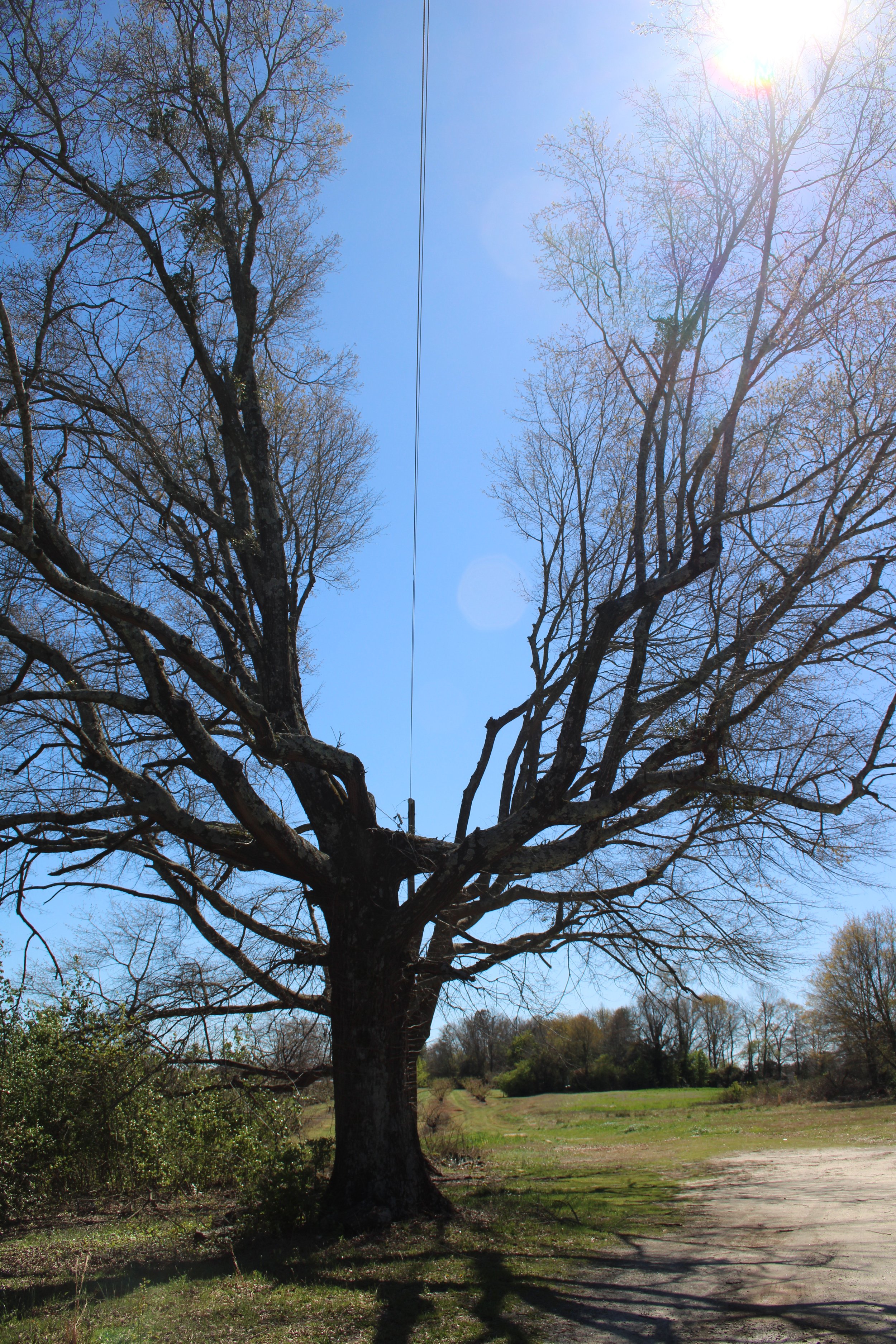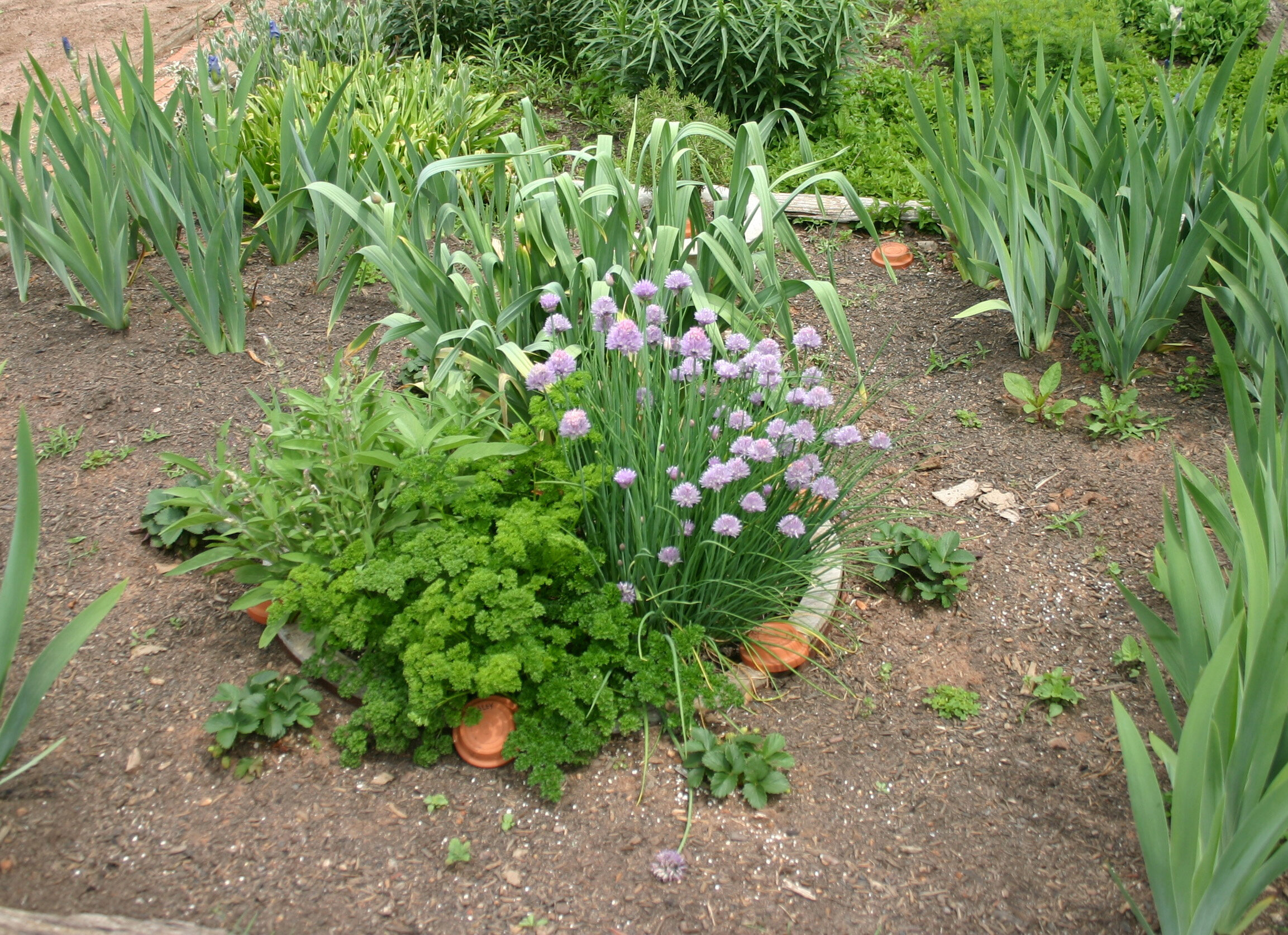This has been a busy week for me (hosting a garden event tomorrow), so rather than researching and sharing plant information, I want to share a few photos of my own garden. When our home renovation was completed, I was left with a garden of compacted soil and not much else. Starting from nothing has been both exciting and exhausting. There are a few basic design rules I follow: For small areas, limit the number of colors. Keep color intensities (saturation) similar. Use contrasting foliage textures to provide energy. Start with big and work to small. This means select trees first, then shrubs, then perennials, then groundcovers. Select large-leaf items first, then work down to fine foliage. These are not hard and fast rules, of course, but it is one approach that produces a balanced garden with rhythm and harmony.
My front garden is not large (50 feet x 40 feet, bisected by a 5-foot wide stone walk) so I decided to limit my colors to three: yellow, salmon/coral, and blue/purple. I thought these would translate to lots of choices. There are many perennials and annuals with yellow and purple flowers. I have yellow Goldenrod, yellow Rain Lily, and Melampodium (reseeding annual). For blues and purples, I chose sterile Pugster® Butterfly Bush, Stachys Betony, purple Salvias, and purple Gomphrena, one of my favorite annuals for season-long, intense color.
The coral flower choices have been harder to make. I finally settled on a salmon-hued Coral Drift® shrub rose, pinkish-salmon Salvia, Penstemon, annual coral Zinnia (Magellan bedding type), and peachy Four O’ Clock (Mirabilis jalapa). The last one is labeled as an annual, but in zone 8a it acts as an herbaceous perennial, with all top growth dying in winter and then returning from a thick tap root each spring. The Salvias and Penstemons started flowering early. The Zinnia buds are just beginning to open. They will look great in a few more weeks. And it will be a few weeks before the Four O’ Clocks start putting on their late afternoon show. About the same time, dwarf Hot Poker Plant (Kniphofia) ‘Poco Red’ will start throwing coral-red spikes. If deadheaded, they will flower all the way to autumn. For additional contrast in texture, I added a couple of salmon daylilies, coral-hued Calla Lilies, and several dwarf Joe Pye weeds. I placed silver-hued ‘Powis Castle” Artemisia between colors that might class if seen adjacent. Turns out, there are different opinions of what is coral, peach, and salmon. I filled any empty spots with Purple Heart and fall-flowering ‘Matrona’ Sedum.
There are two Japanese Maples located in this garden. They were planted last year as one-gallon containers, so it will be several years before they become impressive.
Roughly one-third of the garden is elevated, edged by a stone wall that meets the stone walkway. I am concentrating on shrubs in this area. My current favorites are three Incrediball® smooth Hydrangeas, a row of Morris Midget boxwoods that I leave unpruned so I can enjoy their natural blowsy structure, and an underplanting of chartreuse Creeping Jenny groundcover. Not every gardener shares my affection for Creeping Jenny, but mine grows in an area surrounded by hardscape so it cannot expand into unwanted locations. It acts as a living mulch and keeps my weeding in this area to a minimum because it shades the ground so completely.
As you can tell, I have a mixture of natives and imports, trees to groundcovers, broad leaves, medium leaves, tiny leaves, and grass-like foliage. The salvias and Gomphrena suit my gardening style: heat tolerance, low maintenance plants that won’t turn toes-up if I forget to water occasionally. This is the second year for this garden, and it already looks better than it did during its first season. I hope to share more photos later in the season.
This coral Salvia has been flowering for several weeks. It withstood torrential rain, heavy wind, and a few unseasonably cool evenings without damage.
My favorite of all Zinnias, the Magellan series, started from seed in my greenhouse. It has short internodes so is not well suited as a cut flower. Throughout the summer, it will grow new layers of leaves and new flowers, slowly stacking atop the old leaves and flowers like Nature’s Jenga. This limits the amount of deadheading I must do. A win!
This Penstemon (I think it is ‘ Coral Baby’ but I’ve lost the label) has fine foliage, wiry stems, and tubular flowers unlike anything else in this garden bed.
This Coral Drift® shrub rose flowers continuously throughout the spring, summer, and fall. It has not been troubled by black spot and the only insects that damage it are Japanese Beetles, which I hand-pick.


















